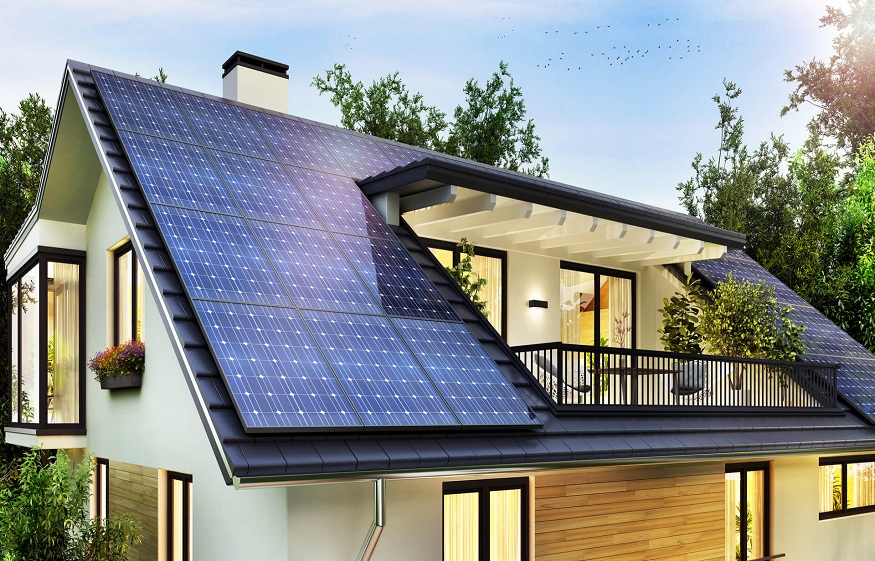Having a solar heating system in California is a no-brainer! Going solar is typically considered by many homeowners to be a reliable method to save thousands of dollars in energy bills. The solar energy sector has evolved exponentially since its beginnings in California, which was an early supporter. Residential solar installations have expanded steadily over the last decade and there are no indications of a slowdown in the foreseeable future.
Can Solar Energy Be Used to Heat Homes?
With a wide range of applications, solar energy may be harnessed and used to heat homes. You don’t necessarily have to rely on solar panels to get your hands on this renewable resource. Not only may the light be converted into electricity by photovoltaic solar panels, but this isn’t the only option to capture solar energy.
There is also an underappreciated technique known as solar heating that should not be disregarded when using solar panels to power your house.
Our ancestors have been using the principle of solar heating for millennia. Nearly a third of all homes today have difficulty paying their energy costs. With this in mind, it’s worth looking at the many ways that solar heating panels or systems might be employed to keep us warm and cut down on those astronomical utility costs.
Passive solar heating and active solar heating may be used to heat your house.
Passive Solar Heating
The term “passive solar heating” refers to a method of heating your home by using the sun’s free energy. The heat from the sun may be stored in the home’s walls and windows during the day and gradually distributed throughout the house at night.
Unlike active solar heating, passive solar heating does not employ any active devices to collect or transfer the solar heat. Instead, the following is required:
- Constructing rooms with wide, south-facing windows to allow natural light and solar energy to flood the space.
- Concrete flooring and masonry with thermal mass are used to trap and store heat.
- Sealing the heat in by putting strong, impermeable insulation on all of the outside walls
- Adjusting the temperature by opening and shutting the windows and vents
- Insulated blinds, curtains, or shutters may be used to keep the heat in during the colder months.
Active Solar Heating
When a residence is heated by a solar power system that is operational, the heat is circulated via mechanical equipment, such as pumps, collectors, and tanks.
The sun’s rays are collected by a flat-plate PV panel collector in an active solar heating system. The collector’s heat is used to reheat the gas and liquid inside the pipe. In any case, the heat is transferred to the interior area through a pump or a venting device.
Solar heating systems, whether active or passive, provide an additional source of heat for your house. The high power costs associated with traditional heaters may be avoided by using solar space heating. Your present heating system might benefit from an inexpensive boost from solar energy.
How Many Solar Panels Would You Need to Heat Your House?
To figure out how many solar panels you’ll need, multiply the system’s output by the panel wattage production ratio. If you’re trying to figure out how many solar panels you’ll need to power your whole home, there are several variables to consider.
There are three key things to consider when determining the number of solar panels required:
- Every year, how much power do you use?
- The watts of a solar panel
- Ratios of production
A 6.8-kilowatt system, under the example given above, would likely be sufficient to meet the typical household’s energy needs in an area with a production ratio of 1.6, which may be the case for most Californian households. A typical house would need between 20 and 24 solar panels to provide all of its energy demands.
It is best for you to consult with a trusted solar panel provider near you in California to determine the exact number that is the best fit for the size of your home and to meet the demands of much energy you regularly consume.
Thinking About Going Solar? Talk to a Trusted Solar Panel Provider in California Today!
Solar panels may be an excellent investment, depending on your power costs, energy requirements, environmental concerns, and the location of your property in California. As a result, solar energy may save you money in the end, even if the initial cost is substantial.
Many factors must be taken into account while searching for the top solar energy providers available. Investing in top-of-the-line solar panels and equipment will help you save money in the long run.



